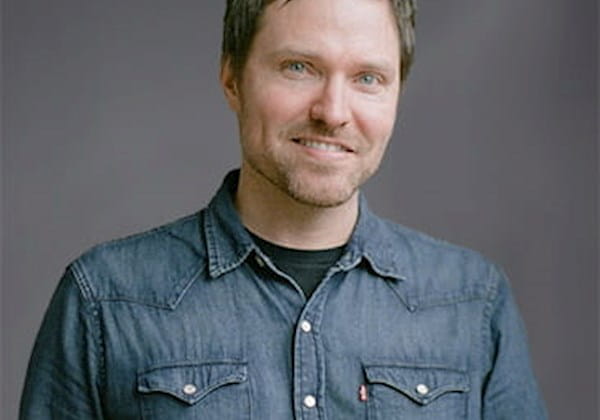Episode 16: From healthcare company to product company: Highmark's journey
Tracy Saula, SVP of Product & Health Experience at Highmark Health, and Matt Johnson
Q&A
Tracy, you have worked extensively on Highmark’s Living Health strategy, which is a blended approach to connect payers, providers, tech innovators, and community organizations. In a highly regulated industry, how did you manage to break the mold and transform the innovation experience from being insurance-centric to product-centric?
Tracy: We looked at the problem statement and realized that healthcare is fundamentally broken. The cost of healthcare is rising unsustainably and yet people are not getting healthier. The two most important people in healthcare are: 1) the person seeking healthcare, and 2) the clinician providing healthcare–both of which are disenfranchised by the system.
Once we recognized this, we formulated our strategy, which places the person and the clinician in the center of the model, and built everything else in the ecosystem around them. The idea of our model is to preserve and enhance the relationship between the person and their clinician–not to transform one side of the industry or the other. A large part of our strategy is focused on digital transformation and fundamentally looking at the value equation in a unique way.
This past year, you began rolling out My Highmark, a new digital experience for customers fundamental to your digital transformation initiative. How is My Highmark poised to support your transformation?
Tracy: We realized that to make healthcare more personalized, and people more engaged, we would need to serve them digitally. Historically, digital transformation in the healthcare industry has largely taken place independent of people and clinicians–but we wanted to bridge this gap. The pandemic also accelerated the need for people to adopt digital means; this led to tech-savvy people with higher expectations of digital interactions.
We recognized that to transform healthcare and leverage digital modes of engagement, you have to put the person at the center.
”
To us, that meant creating a one-stop shop for all things healthcare. Our goal was to create something that people lean into and use because they like and benefit from it, not because they have to.
The customer landscape is changing for digital needs as customers of all ages have high expectations but potentially different wants/needs. How does this impact the way you think about digital products and experiences?
MJ: I think people’s wants and needs changing is the fundamental point. I have seen in my personal life how digital and physical experiences are blending together. For instance, one-quarter of Starbucks orders don’t even touch the cash register anymore–people place the order, pay on the phone and pick it up in the store. The pandemic only accelerated this trend.
I think the healthcare industry is trying to mimic what other industries have successfully done and is investing in making digital and physical experiences better. It’s about asking questions like: How can I do something ahead of a visit? How can I do something to connect people? How can I take data and use that to predict what you might need?
With all these changes, I don’t think about experiences and products being particularly digital anymore. Rather, I think of it as an overall experience and how we use technology to make the time that we invest with a brand better.
Highmark places high value on having multidisciplinary teams to gain a mix of perspectives to ensure the best solution possible. Are there any other things you think are of value when creating this connected experience?
Tracy: We certainly ensure that different perspectives are being considered to create the best possible solution for people.
MJ: Additionally, we learned from research West Monroe did that an average employer buys 29 benefits for their employees including health care insurance, dental insurance etc. – so, one thing to make sure of is that when using such digital tools, the data is right every time.
One thing Highmark has invested in to make an intentional and well-designed experience is the accuracy in transactional, base level things like data. To make this experience good for both people and clinicians, they have to trust that the data they’re seeing on both sides is accurate. It’s about connecting the right people looking for healthcare with the right clinician who’s an expert in the field with the correct data.
Another thing of high value is time for the patient and the clinician. I have had personal experiences where I filled out a form at home prior to my visit to the doctor, then filled in those forms again waiting for the doctor and giving the same information when I finally saw the doctor. That three-to-four-hour experience could have been 30 minutes, so Highmark is focused on how we take time out of the system, how we save end-users time which makes for a more delightful experience, and clinicians who are burnt out and spending more time on technology than they ever have.
Highmark is fundamentally changing the way it operates and delivers value to customers. How are you supporting the organizational change required internally to drive such a transformation?
Tracy: We started by launching a mission quite different from anything we had ever done before as an insurance company - creating a remarkable health experience and freeing people to be at their best. Our vision was a world where everyone embraces health, which was our clear problem statement. We wanted to differentiate ourselves by having better insurance products for people who are buying them, using them and what would finally lead to better economic outcomes as a result.
As a company, we also have clear shared outcomes. We used to be a functionally oriented company but now we are much more of a journey-oriented company, thinking about the outcomes we want to achieve as a part of this healthcare journey. Overall, I think it’s truly a journey–a shift more toward working in a product company and understanding the results you expect to get out of it, all the while allowing flexibility for teams to be innovative within that space. We recognize that this is not a sprint, it’s something that’s going to take time, and we’re in it for the long haul.
Related Content
This is Digital
West Monroe's team of experts and guests pull back the curtain on how to build digital throughout an organization. Through real-world examples, you will learn how to spot digital transformation in real life, and how to make small decisions every day that make a big impact on growth.











